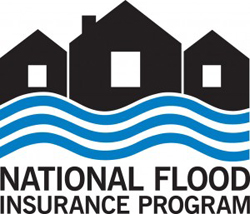 Changes are coming to the critically important National Flood Insurance Program (NFIP) that could impact real estate transactions and property owners across the country. That’s according to experts from the Federal Emergency Management Agency, which manages the government’s flood insurance program, who spoke to REALTORS® at a Flood Insurance 101 session during the Realtors® Midyear Legislative Meetings & Trade Expo.
Changes are coming to the critically important National Flood Insurance Program (NFIP) that could impact real estate transactions and property owners across the country. That’s according to experts from the Federal Emergency Management Agency, which manages the government’s flood insurance program, who spoke to REALTORS® at a Flood Insurance 101 session during the Realtors® Midyear Legislative Meetings & Trade Expo.
The National Association of REALTORS® strongly supported the legislation and believes the government’s insurance program saves taxpayers property and money because it increases the number of self-insured properties and reduces the cost of post-flood disaster governmental assistance.
The NFIP is responsible for writing and renewing flood insurance policies for more than 5.6 million home and business owners in more than 21,000 communities nationwide where flood insurance is required for a mortgage. Before Congress passed the legislation, the program operated under short-term extensions. In the past five years, there were 18 extensions and several lapses in program coverage, delaying or cancelling thousands of real estate transactions daily, according to NAR’s own research, wreaking havoc on real estate markets.
The NFIP is $24 billion in debt following several disastrous storms in recent years since the costs and consequences of flooding continue to rise. Rate subsidies are being phased out over the next several years to help increase the NFIP’s soundness and financial stability.
The majority of policyholders, more than 80 percent, are not subsidized and won’t be impacted by subsidized rate changes since they are already paying full actuarial rates, he said. However, these owners could see routine annual rate increases. Only about 20 percent of NFIP policies receive subsidies, mostly older structures built before the community’s first flood insurance rate map was issued. Some of these policyholders will be impacted by the gradual phase-out of subsidized rates; an even smaller number will see immediate changes to their insurance policy rates.
While higher rates may place a greater burden on families, there are investments homeowners can make to either reduce or better access their flood risk so they can continue to protect their families and possessions from damaging floods. Homeowners can lower their risk by elevating their property and potentially reduce their flood insurance rates by having an elevation certificate completed to determine the property’s elevation relative to the base flood elevation. Elevation certificates can cost several hundred dollars to complete but could potentially lower homeowners’ flood insurance premiums.
For a presentation highlighting the NFIP changes, click HERE


